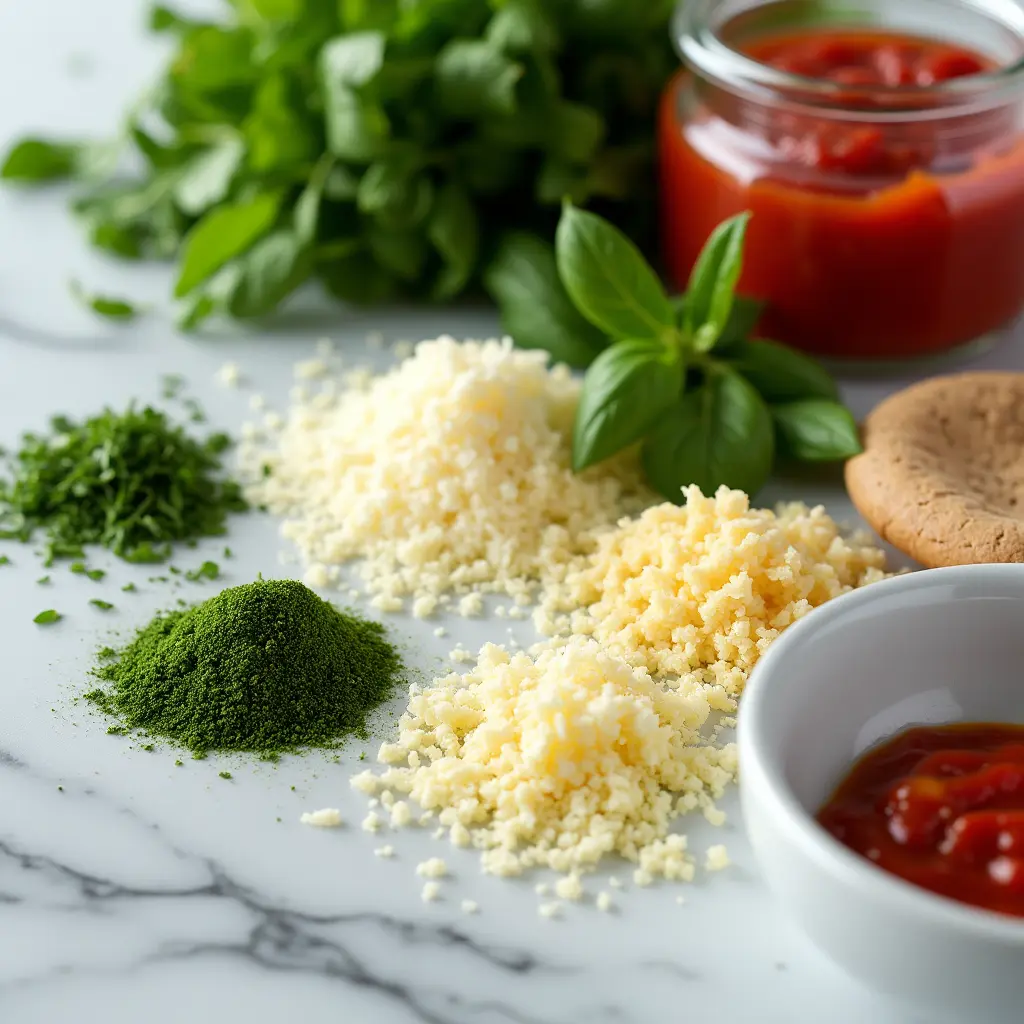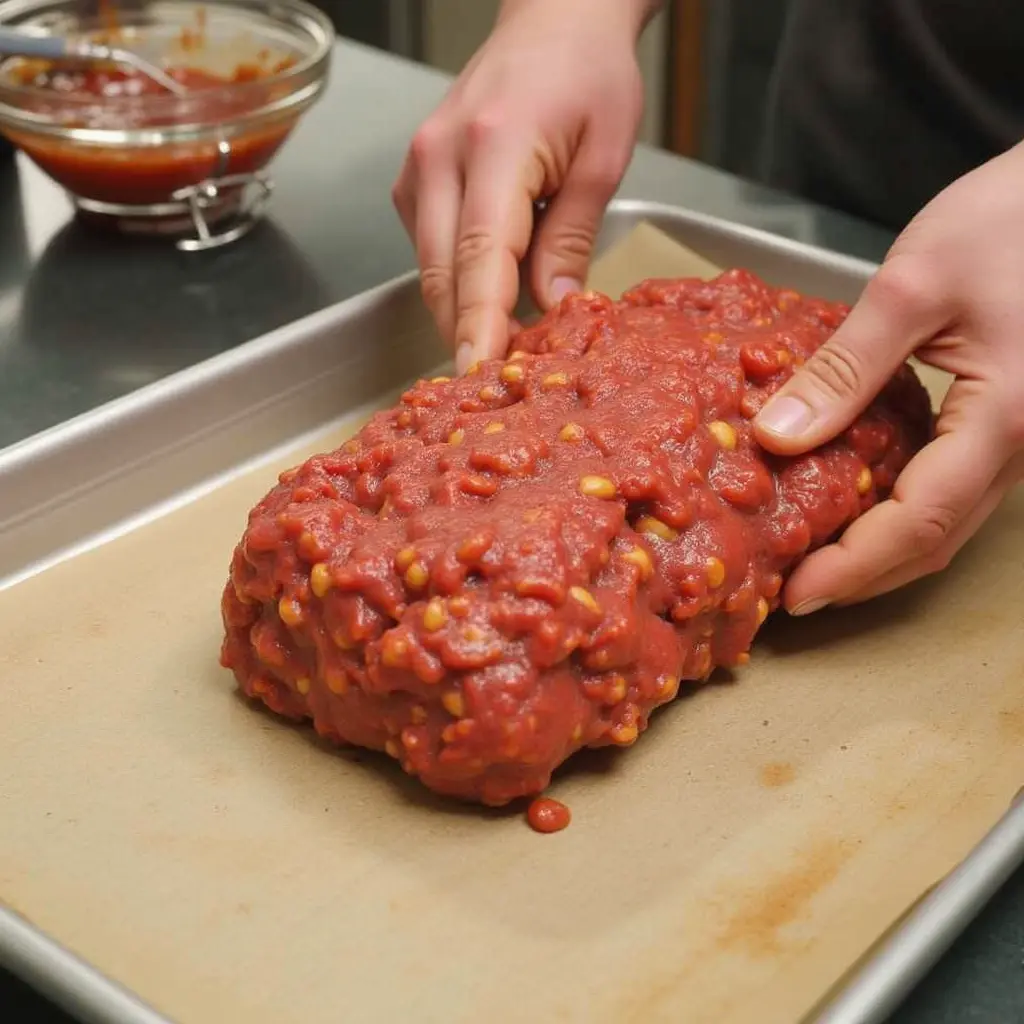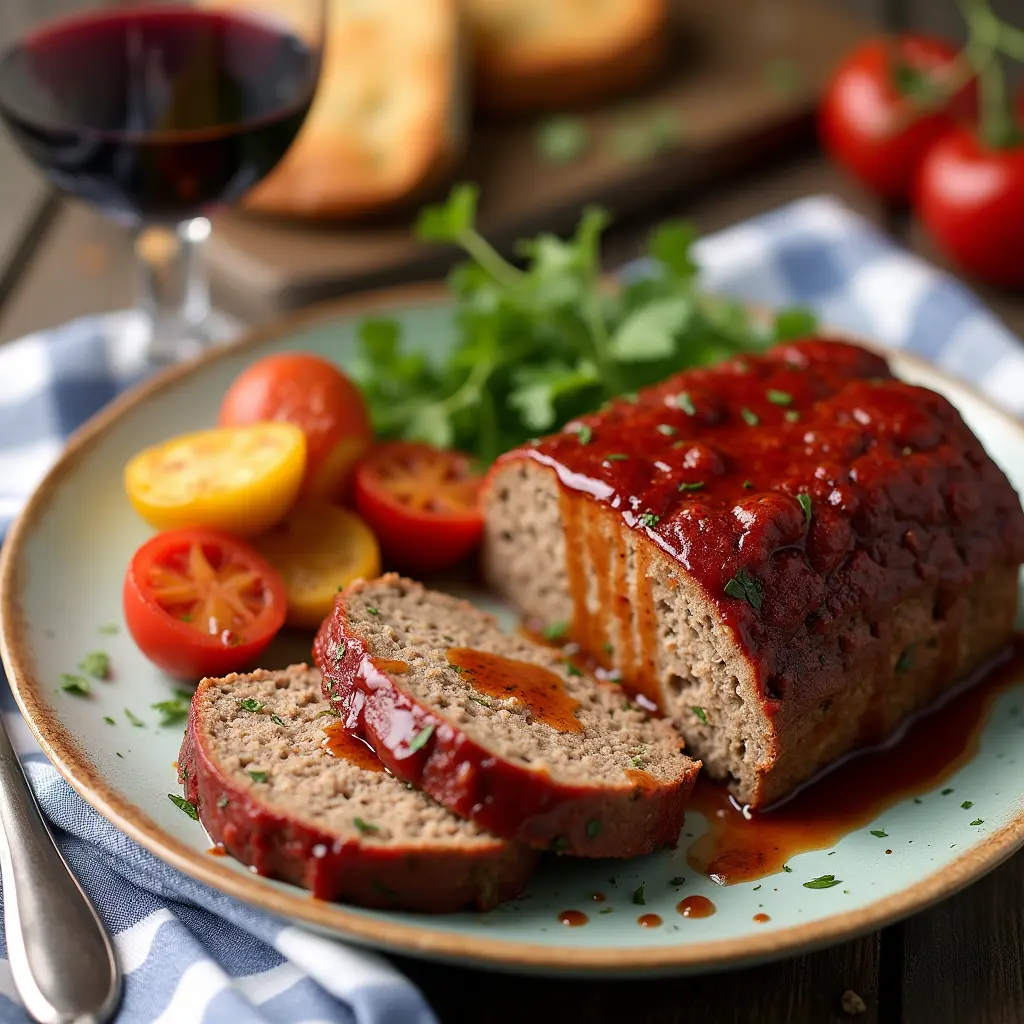Craving comfort food but short on time? This Italian meatloaf recipe delivers big flavors in just 30 minutes! Imagine tender, juicy meat infused with garlic, oregano, and Parmesan, all topped with a zesty tomato glaze. Whether you’re a busy parent or a meal-prep pro, this dish brings a taste of Italy to your table—fast. Let’s get cooking!
Table of Contents
Ingredients for Italian Meatloaf: Balancing Flavor and Texture
You know what makes or breaks a meatloaf? The ingredients. Seriously—if you skimp here, no amount of fancy glaze is gonna save it. Trust me, I’ve been there. One time, I tried making this with just beef because that’s all I had in the fridge. Big mistake. It turned out dry and kinda… boring. Lesson learned: blending your meats is key.
Ground Meat Blend (Beef, Pork, Veal) for Authenticity
Here’s the deal—Italian cooking is all about balance. A mix of ground beef, pork, and veal gives you that perfect combo of richness, fat, and tenderness. Why does it matter?

- Beef : Brings the heft and deep flavor.
- Pork : Adds juiciness and keeps things tender.
- Veal : Keeps the texture light and delicate.
If you can’t find veal (or if it’s too pricey), swapping in more pork works fine. Just don’t skip the blend altogether unless you’re okay with mediocre results.
Fresh Herbs (Parsley, Oregano, Basil) vs. Dried
Fresh herbs are like the cherry on top—they make everything pop. But dried ones aren’t useless either; they’re just… quieter. Here’s my take:
- Parsley : Fresh is non-negotiable—it adds brightness.
- Oregano : Dried is totally cool since its flavor intensifies when cooked.
- Basil : Use fresh if you’ve got it, but dried works in a pinch.
Once, I forgot both and used thyme instead—it wasn’t bad, but it wasn’t Italian . Moral of the story? Stick to the classics when possible.
The Role of Parmesan and Breadcrumbs in Moisture
Parmesan isn’t just for pasta, folks. Grated finely, it melts into the meat mixture, adding umami and helping bind everything together.
- Breadcrumbs : They’re not filler—they trap moisture so your loaf doesn’t turn into a brick.
- Pro Tip : Soak breadcrumbs in milk first for extra juiciness.
Tangy Glaze Ingredients (Tomato Paste, Balsamic Vinegar, Honey)
Now, the glaze. This is where magic happens. Mix these up:
- Tomato paste : Gives body and richness.
- Balsamic vinegar : Adds tang and depth.
- Honey : Balances it out with sweetness.
Brush it on halfway through baking, and boom—you’ve got yourself a showstopper.
So, ready to shop for ingredients yet?
Step-by-Step Instructions: Crafting the Perfect Loaf
Alright, let’s get into the nitty-gritty of making this Italian meatloaf. I’ll admit, I used to think meatloaf was just “throw it all in a bowl and bake.” Boy, was I wrong. Turns out, there’s an art to this—especially if you want tender, flavorful results. Allow me to walk you through it step by step.

Mixing the Meat: Avoid Overworking for Tender Results
Here’s where most people mess up—including me, back in the day. You know how dough gets tough if you knead it too much? Same goes for meatloaf. Overmixing = dense loaf. Nobody wants that.
Instead, use your hands (yes, get messy!) and gently combine everything until just blended. Think of it like folding batter—you don’t wanna crush the life out of it. A light touch keeps those juices locked in.
Oh, and one more thing: Wet your hands before shaping. It prevents sticking and makes the process way less frustrating. Trust me, it’s a game-changer.
Shaping the Loaf (Free-Form vs. Loaf Pan)
Now comes the fun part—shaping! You have two primary options to think about:
- Free-form : Mold it by hand on a baking sheet. Pros? Crispy edges all around. Cons? It can spread out a bit if not shaped firmly enough.
- Loaf pan : Keeps things neat and compact. But beware—it traps steam, so the bottom might not crisp up as nicely.
Personally, I’m team free-form. Sure, it’s messier, but those caramelized edges? Worth it.
Baking Temperature and Time (375°F for 25 Mins)
Okay, science moment: baking at 375°F is key. Too low, and it won’t brown properly. If the temperature is too high, the outside will burn while the inside remains undercooked.
Set your timer for 20 minutes , then check for doneness. The internal temp should hit 160°F . If you’re using a glaze (spoiler: you should), brush it on during the last 5 minutes of baking. Speaking of which…
Glaze Application: When to Brush It On for Maximum Flavor
Timing matters here. Slap that glaze on too early, and it’ll burn. Wait till the last 5 minutes of baking. Use a pastry brush to spread it evenly—don’t just dump it on and hope for the best.
Pro tip: Warm the glaze slightly first. It spreads smoother and sticks better. Plus, it smells amazing while baking. Seriously, your kitchen will smell like an Italian grandma’s house.
By now, you’ve got the blueprint for a killer Italian meatloaf. Ready to roll up your sleeves and give it a shot? Go on, you’ve got this!
Serving Suggestions: Complete the Italian Feast
Let’s talk about the unsung heroes of any meal—the sides. Sure, your Italian meatloaf is the star of the show, but pairing it with the right companions can take dinner from “good” to “let’s book a trip to Tuscany.” I’ve made my fair share of mistakes here—like serving spaghetti with marinara alongside meatloaf. (Yeah, don’t do that. Too much tomato overload.) Over time, I’ve figured out what works and what flops.

Pair with Roasted Vegetables (Zucchini, Peppers)
Roasted veggies are where it’s at. They’re simple, healthy, and add a pop of color to your plate. My go-to combo? Zucchini and bell peppers tossed in olive oil, garlic, and a pinch of red pepper flakes. Roast ‘em at 400°F for about 20 minutes until they’re caramelized and tender-crisp.
Here’s why this works: the sweetness of the roasted veggies balances the savory richness of the meatloaf. Plus, it’s an easy way to sneak in some greens without anyone complaining. (Kids included!)
Pro tip: Toss the veggies in balsamic vinegar before roasting. It adds a tangy depth that pairs beautifully with the meatloaf’s glaze.
Pasta Sides: Garlic Bread or a Simple Salad
Now, if you’re craving carbs (who isn’t?), garlic bread is your best friend. Slather a baguette with butter, minced garlic, and parsley, then toast it until golden. Serve it warm—because cold garlic bread? No thanks.
If you’re trying to keep things light, though, a simple arugula salad with lemon juice, olive oil, and shaved Parmesan is clutch. The peppery arugula cuts through the richness of the meatloaf, while the lemon brightens everything up.
Wine Pairings (Chianti, Pinot Grigio)
No Italian feast is complete without wine, am I right? For this dish, you’ve got options:
- Chianti : This medium-bodied red has earthy notes that pair perfectly with the herbs in the meatloaf. It’s bold enough to stand up to the flavors without overpowering them.
- Pinot Grigio : If you’re more into whites, this crisp, citrusy wine complements the glaze’s sweetness and keeps things refreshing.
I’ll never forget the first time I paired Chianti with meatloaf—it was one of those “aha!” moments. Like, wow, food really can taste better with the right drink.
So there you have it—a full-blown Italian feast ready to impress. Whether you’re hosting family or just treating yourself, these pairings will elevate your meal. Cheers to good food and great company!
Pro Tips for Authentic Italian Meatloaf Recipe Flavor
If you’ve ever wondered why restaurant Italian food tastes so much better than what you make at home, it’s all in the details. Little tweaks can take your Italian meatloaf from “meh” to “mamma mia!” Over the years, I’ve picked up some tricks—some through trial and error, others from watching way too many cooking shows. Let me share my top three secrets for packing that authentic Italian punch.
Use Freshly Grated Parmesan (Not Pre-Shredded)
Listen, I get it—pre-shredded Parmesan is convenient. But here’s the thing: it’s often coated with anti-caking agents that dull the flavor. Freshly grated Parmesan? Game-changer.
I remember the first time I swapped pre-shredded for the real deal—it was like someone turned up the volume on the umami. The nutty, salty goodness melts right into the meat mixture, giving it that rich depth Italians are famous for. Plus, it feels fancy, even though it’s not.
Pro tip: Buy a block of Parmigiano-Reggiano (the king of cheeses) and use a microplane grater. Your taste buds will thank you.
Add a Pinch of Red Pepper Flakes for Heat
Here’s where Italians really shine—they know how to balance flavors. A pinch of red pepper flakes might seem small, but it adds just enough heat to wake up your palate without overpowering the dish.
I learned this trick from a friend who grew up in Naples. At first, I thought, “Spice in meatloaf? Really?” But oh man, it works. The subtle kick makes the herbs and glaze pop. Just don’t go overboard—one-eighth of a teaspoon is plenty unless you’re a spice fiend.
Let the Meatloaf Rest Before Slicing
This one’s crucial. I used to slice into the loaf as soon as it came out of the oven because, well, patience isn’t my strong suit. Big mistake. The juices need time to redistribute, or you’ll end up with a dry mess.
Here’s the rule: let it rest for at least 10 minutes. Cover it loosely with foil to keep it warm while you set the table. Trust me, those extra minutes make all the difference.
These tips might seem small, but together, they add up to something special. Follow them, and you’ll be serving up an Italian meatloaf that tastes like it came straight from Nonna’s kitchen. Buon appetito!
Conclusion
Who says authentic Italian food needs hours in the kitchen? This meatloaf proves that bold flavors and quick prep can go hand-in-hand. Perfect for busy nights or Sunday dinners, it’s a recipe you’ll return to again and again. Ready to impress? Grab your ingredients and let’s make mealtime magnifico !
FAQs
1. Can I make this gluten-free?
Swap breadcrumbs for gluten-free oats or almond flour!
2. Is this recipe spicy?
Only if you include red pepper flakes—adjust the amount to suit your taste!
3. How long do leftovers last?
Keep it in the fridge for up to 3 days or freeze it for as long as 3 months.
4. Can I use Pecorino instead of Parmesan?
Absolutely! It adds a sharper, saltier kick.
5. What sides pair best?
Go for roasted veggies, a fresh crisp salad, or creamy polenta.

